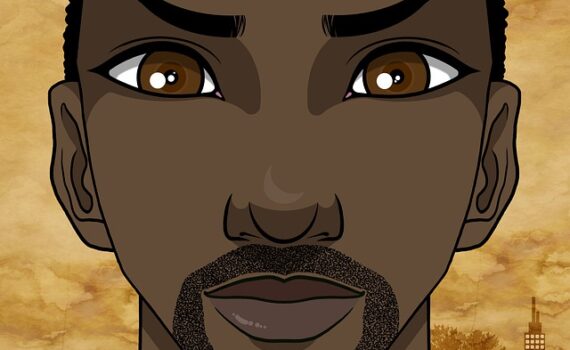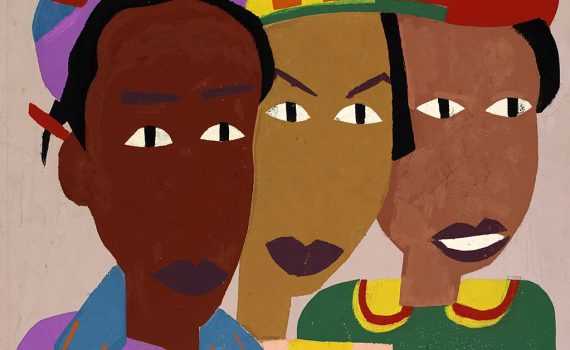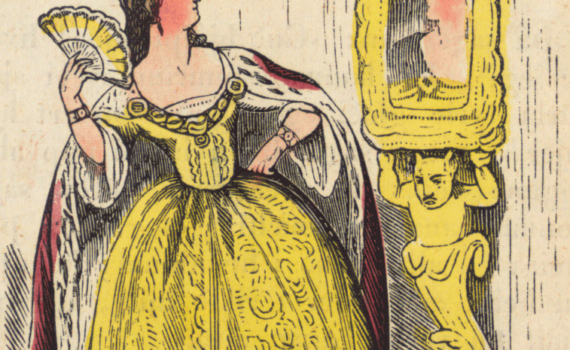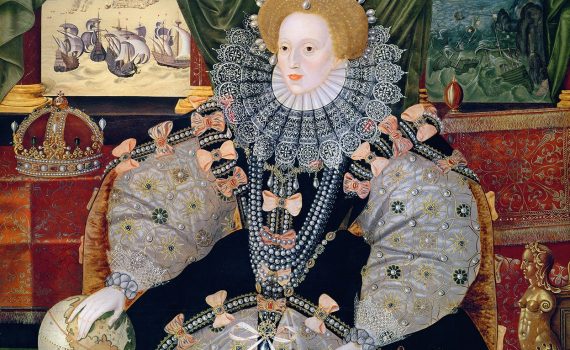“Salvation” by Langston Hughes recalls an experience that left the narrator deceived by Jesus. Starting off, it seems as if Langston is ready to be brought to Jesus as he believes what his aunt is telling him about the whole celebration. All around the church are moans and shouts for these mourners on the bench to come and see the light of god, but it’s as if they are forced to do it. Langston states a man said “Won’t you come? Won’t you come to Jesus? Young lambs won’t you come?” which caused the little girls to cry and go meet Jesus right away. What Langston describes is that the adults are acting obnoxious to these kids and the experience sounds forceful for them to meet Jesus. After some time, Langston was all alone on the bench and he states that he just couldn’t see Jesus, even while being pressured by his aunt and the minister to come and be saved. Finally, he rises up and gets led to the platform as everyone shouts and rejoices as the celebration comes to an end. Importantly, Langston states that he had a sense of guilt because he didn’t see Jesus or even felt his presence, meanwhile his aunt thinks he met the Holy Ghost.
Yearly Archives: 2022
Corey Lei, ENG 201, Sec 0516 At the begging of the story, the Author Langston Hughes was automatically made to believe he was with Jesus (1). She stated, ” you were saved. You saw the light, and something happened to you inside! And Jesus came into your life! And God was with you from then on! “(1). Langston was put with a group that hadn’t felt the connection with Jesus, and he was placed in the front role on the mourners’ Bench with his age group. He and another child name Westley were the only ones who hadn’t gotten up to the so-called light they saw. Westly lied and pretended to know Jesus to avoid being preached, singing along with the songs. Seeing the light meaning is believing in Jesus. Then Langston stood and stood up, and everyone in the church celebrated that Langston had finally seen the light. His Aunt was thrilled. Later the night, he cried, while his aunt thought it was just the Holy Ghost getting to him. In the beginning, Langston was brought to the church and was convinced Jesus had brought him to life and gave him a chance. The church was a test to see his belief. The Author was confident in the beginning but confused in the middle because he was the last to ” see the light. ” In the end, he felt hopeless and horrible because he lied and still hasn’t seen the light.
Wyman Siu, Eng 201, Sec 0516 In the text, “Salvation”, by Langston Huges, it is portrayed at the beginning that his younger self was always told. For example, his aunt told him, “My aunt told me that when you were saved you saw a light, and something happened to you inside! And Jesus came into your life!”(Paragraph 2). He was told to believe, he never thought about what he was told. Just what was God? Throughout the text, he realized that god wasn’t a person but a belief that many people see. It is not only leaving doubt and questions in his mind and that is what gives into his mindset at the end of the text. It is an irony, a situational irony to be exact, that what’s giving other people including his family (aunt) hope is giving him doubts. I thank this also highlights his change from the beginning of the text to him as a young adult.
The narrator on “Salvation” by Langston Hughes, the young narrator is different from the way he was at the beginning of the story, by showing the way he believed everything he was told when he was young because as we read the story we can see clearly he is told that those young lamb who’s sinners are able to see Jesus and believe he would go inside you and and forgive them. But after the event he pass through were he didn’t see or felt nothing he felted he was lied and he couldn’t believed it, cryed in the night and he learn that there was no God and that he was lied. He also felt bad on telling his aunt that he had lied on the event because he got up and went to the altar as if he saw and felt god presence which was a lie, he changes from believing everything he was told to not believing and not knowing what to believe or think.
The story, “Salvation”, by Langston Huges, portrays that the young child was believing in something that has been told him by since he was a kid by his family and when he was in church with his aunt he experience a lot different from what he has told because he was believing that GOD will be sent down and help him forgiving his sins but he never see Jesus so he was upset about it and he acknowledges that there is no Jesus who comes down to saved him yet the lord of the church was calling him to come and be saved and he wasn’t sure if he goes up and then gets ashamed by others because he didn’t see any GOD there. So starting to believe that it’s a whole lie about Jesus that comes down to save him when he never sees anyone.
“Salvation” by Langston Hughes is a good read chosen by Professor Conway. I feel as though the narrator is noticeably different from the way he was in the beginning of the story since at the end of the story he said “I didn’t believe there was a Jesus anymore, since he didn’t come to help me”. The narrator thought the comment from his aunt “you could see and hear and feel Jesus in your soul”. literal after his aunt told him he will and it ruined his beliefs because of it, and I believe he understands it as an adult now. According to the video that was assigned, this story falls under dramatic irony. I believe it falls under dramatic irony since the narrator believed everything that he was told but ‘we’ the readers know the aunt did not mean it literally but he doesn’t understand she meant figuratively because he was 12 years old.
“Salvation” by Langston Hughes was another very interesting read by Prof. Conway. I think Hughes was different by the end of the story because he then developed an even greater fear about being “saved” which he initially thought would be a positive experience. He became even more confused because being “saved” turned into him lying but by lying he made the congregation happy because they thought he was “saved”. I think Hughes was overthinking what being “saved” actually means but he was also only thirteen years old so what could you expect. I thought it was really funny when his friend decided to just go up and be saved because he was tired of waiting, so he didn’t take it too literally and just went up and gave the people what they wanted, which is essentially what Hughes did but he ended up having a really guilty conscience about it.
There are many viewpoints that I have read when it comes to this story. Though in my perspective, I believe this might have been assigned to open our minds up to the ability of change and imagination. These women knew absolutely nothing about this man – who they called “Esteban.” Yet because their mind created many scenarios that this man may have not been satisfied with his life, they change their surroundings in honor of him. “..everything would be different from then on, that their houses would have wider doors, higher ceilings, and stronger floors so that Esteban’s memory could go everywhere without bumping into beams..” Pg. 8. They showed compassion for a stranger and that reflected on their own being. I feel like this can factor into today’s class. Despite being strangers, we can help each other grow. To help each other adapt to change and open a mind to a wider imagination.
At the beginning of “Salvation”, we see a young hopeful child getting ready to go to church with his aunt. Often in churches, people like to take children to churches to become acquainted with the religion at an early age to worship. In the text, it’s described as bringing the young lambs to the fold. When people are in church, specifically black churches, they’re very high energy. People can be found singing, preaching, and fainting. Since the adults are accustomed to religion, they’re able to have faith in it and connect deeply with it. Compared to the adults in the church, the children didn’t feel anything. Langston believed to be saved he had to vividly see Jesus. His aunt explained that when he was saved, he’d see a light, and something happened to him inside. He was expecting a physical being instead of a feeling. Religion is a very nuanced topic that is hard for children to grasp. There are a lot of open-ended questions when it comes to religion that would make it hard as a child to fully understand how you’re supposed to act and feel when you’re worshiping. Throughout the story, we see how Langston’s excitement and childlike wonder dwindle once he starts to not feel or see anything in the church. He saw his friend also not feel anything but went up anyways to get it over with. Later he did the same but felt guilty as if he were lying because he did not feel anything or see any light and lost that faith he once had. The dramatic irony in the story stems from the vague sense of religion.
I think Professor Conway assigned “The Handsomest Drowned Man” because Gabriel Garcia Marquez depicts all the qualities people strive for in one person. The man, Esteban, Is tall, strong, and handsome. Despite being dead, the people admire the man’s qualities without really knowing him. The man had an impact on so many people without even doing anything to move them. He, himself, moved them, almost like a sense of leadership. It’s interesting to take into account Marquez’s cultural background considering he is Colombian. Machismo culture in Latin America is a very strong sense of masculine pride, though having negative connotations, it is ingrained in a lot of people, especially at the time of publication, 1968. To have one person embody that would be truly admirable for the people in the village, specifically men, as something to strive to be. There are themes of vanity and unity, bringing all sorts of people together in the village. I think this shows how easily a group of people can react when a manifestation of all attributes they find attractive come to life. In real-world examples, we see how figures with a large diverse audience such as political figures, celebrities, etc. have a charm to them that people are drawn to. They could do good, bad, or nothing at all and still have an effect on people’s behavior. The story helped us put ourselves in the character’s shoes and connect the descriptions given in the text to how we as the reader would react to get a better picture of how the characters in the story felt.
I believe the professor decided to have the “Handsomest Drowned Man In The World” as the first story as it makes you think about how people tend to view someone so much based off appearances. In the story it talks about how the woman though of the man as beautiful and strong how he would have the happiest wife, the biggest house, and that the fish would rise out of the sea at his beck and call. It made me think how could someone come to such conclusions based solely off how one may look they were unable to have a single conversation with the drowned man but somehow they were able to imagine so many aspects of how his life could have been in the village. I’d like to think as the reader if pushed into a similar situation as in the story that I would not think much of what kind of life the man lived but rather how he died and how he would be if he was alive to engage in a conversation rather than assume based off his physical attributes that he was this amazing man who could do everything perfectly.
The reason that this story was the first to read in this course could be to help us students with our imaginations. This could be because “The Handsomest Drowned Man In the World” is filled with imagery from the beginning to the end. Right from the very beginning we are told that some children find it and think it was a ship, but later change their mind and think it’s a whale. When the body washes up on the shore we are given even more descriptions of the body on how it is covered in various things from the sea. As the story progresses we learn about how heavy he is, what he smells like, his body features, and even see how the women in the village clean him up using various tools. By the end of the story everyone in the village is enchanted by the body who they name Esteban and we learn about how they change things in their village to fit Esteban’s body size.
I think the professor assigned this as the first story of the course because there’s just so many ways that you can interpret this story. In my opinion, I think this is a very emotional and inspiring, but confusing story. At first I was like okay, maybe this could be a depiction of a god-like figure or something along the lines of religion, especially because of the name Esteban. But as I continued reading it just showed me different points of views from the people in the village and how fragile a person’s ego can be. This story also allows me to put myself into the character’s shoes and feel what they are feeling because of the very detailed imagery. The author set such a perfect scene that it all felt so real. Just like story book characters and reality, we’re all the same. We go through the same emotions, we get inspired from the most unexpected things, and we also learn to grow and change for the better.
Why do you think I might have assigned this as the first story of the course? “The Most Handsome Drowned Man” by Gabriel Garcia Marquez. The reason you might have assigned this as the first story of the course is because Gabriel Garcia Marquez is one of the best known writers in History. Apart from that, the story of “The Most Handsome drowned Man, can signify the willingness to change our perception of ourselves, and others. In the story the women noticed how different “Esteban” was compared to their husbands. They made an emphasis on how tall he was, and how weak they seemed compared to him. This allowed for transformation to happen within the villagers perceptions of themselves and of Esteban. Without knowing him, they were able to learn and care for him. This also happens when we enter a new classroom, we learn about our peers and their surroundings.
The first sentence of the story, Langston Hughes describes the experience as being saved from sin, but not really saved which expressed little credence in the notion of salvation through Jesus. As an adult, It seems as though his beliefs had shifted. When describing the events from when he was a child, he followed along with the traditions taught to him. However, he also took a lot of it literally. His aunt described the encounter with Jesus as one that would involve all of his senses, seeing, hearing and feeling Jesus in your soul. For a young boy raised within a family of deep faith, so much so his aunt and the congregation at church all wept during the ceremony, there was no reason for him to doubt or question the description of the events that they were preparing him for. According to the video that we were assigned to watch, I believe this part of the story falls under dramatic irony. Where ‘we’ the readers know more about the events of the story than the character. Although it is being told through first person narration, he explains his expectations of actually seeing Jesus and as the reader we already know that is not what would happen. Otherwise, it would probably fall under crime/horror genre.
Click here for access to the BMCC Fall 2022 Academic Calendar, which lists important dates and deadlines for the semester.
The Professor assigned this story because she wanted us to understand the imagery that is used in a writing, how we can incorporate it into our own, and its significance of it. There is a lot of expression and emotion in the story to discuss how they felt when they saw the man at first, and when he was put back in the ocean. Even after not being told what his name was, they felt that his name was “Esteban” from how he was described and how he seemed to the people of the village. Imagery helped the reader to understand the environment that he was in, how he looked, and how his appearance had an effect on the villagers. In the story, it explains how “he had the smell of the sea about him”, and that, “he was the tallest, strongest, most virile, and best-built man they had ever seen.”
The short story “The Most Handsome Drowned Man”, written by Gabriel Garcia Marquez is an example of society’s behaviors. We can see how the appearance changes the way people behave. The author describes the drowned man’s physical appearance very detailed. I find this type of story interesting because it isn’t obvious to understand (although the author describes everything in details), you have to read it a few times, and it can be interpreted in different ways. I think this is why professor Conway chose this story first; it gives us an idea of what the course content will look like and what to expect. As I see it, this story is a way to emphasize the relationship between men and women and also how physical appearance affects people’s behavior.
I believe Professor Conway chose “The Handsomest Drowned Man In the World” as our first story of the course because it uses a variety of Symbolism and allows the reader to really think about what something at first seems so insignificant can have a major impact on people’s lives. When “Estaban” came into their lives from the ocean he had come tattered almost not recognizable as a human being but as they kept taking care of him, they noticed more and more human aspects of him although he was larger in every way. They sympathized with him without knowing him at all and saw the world in his eyes as they would, The end of the short story paints a picture for us about them having a wonderful funeral for a man they never knew or met alive. They even went ahead and made their town more accessible and made the whole town a memorial to Estaban. This completely random man that floated from out of nowhere had a major impact on a town that he would never see and therefore changes it for others in the future completely
Hello Everyone, My name is Nato, and I am 22 years old. I am from Georgia (country) which is one of the most beautiful countries in the world. I moved to the United States at the age of 20 alone, which has been one of the biggest step forward in my life. The decision required a lot of confidence, patience, strength, and dedication, which all has been worth for what I have today. This is my fourth semester at BMCC, and I am truly enjoying every path of this journey. My major is Liberal Arts. From the very beginning, I wanted to explore every field of the study which afterwards would help me decide my career path. Currently, I am deciding between Marketing and Graphic Design. During my free time, I enjoy exploring New York city with my friends. Photography is one of the best tools I use to capture beautiful moments and it helps me save memorable events in my life. During winter, I enjoy snowboarding and most of the winter sports, but in summer I can spend hours on beaches. I love traveling and when there is a chance, I always try to visit new places. Recently, I visited California with my friends for the first time which was really exciting trip for me. Thank you, Natalie
Prompt: Why do you think I might have assigned this as the first story of the course? Based on my experience, I find the stories interesting when the author puts a lot of hidden messages in it which might not be obvious when we first read it. In my opinion, both external and internal information gives us a full deep image of the story. The story “The Most Handsome Drowned Man” written by Gabriel Garcia Marquez is one of the best examples of presenting both character’s internal and external journey. The story is about a village that finds a dead man on its shore. The author perfectly describes dead man’s physical features and emphasized on how big and masculine he was. We see the internal journey when women start taking care of the protagonist, which step by step lead us to the conclusion of the story. In my opinion, the reason why we were assigned this as the first story of the course is to make us first questions and second realize the details we read in the stories. How each detail makes the story as one whole. How character’s physical or inner world are connected with each other and how all of it leads us to conclusion.
“The Handsomest Drowned Man” a short story by Garcia Marquez was a very inspiring read and I think that might be one of the reasons professor chose it as a first read of the class. The arrival of the dead body of the handsomest man totally changed the village and it’s citizens for the best. As the story progresses we can witness the villagers discovering all these attributes about Esteban that ultimately broadened their horizons in a matter of a day and changed their mindsets forever. The appearance of this handsome man really turned their worlds upside down by how different he seemed to them, the fact that he had a huge body and their honest attempts to visualize and sympathize with the discomfort of his existence where everything was designed for smaller people. I think there is an irony in a fact of what an overwhelming positive influence this man had on the village and it’s many generations and he wasn’t even alive when he came into their lives. The village blossomed with flowers and beautiful colorful homes, it’s citizens learned a lot from Esteban and this story shows that keeping an opened mind is key to grow and expand.
“The Handsomest Drowned Man” a short story by Garcia Marquez was a very inspiring read and I think that might be one of the reasons professor chose it as a first read of the class. The arrival of the dead body of the handsomest man totally changed the village and it’s citizens for the best. As the story progresses we can witness the villagers discovering all these attributes about Esteban that ultimately broadened their horizons in a matter of a day and changed their mindsets forever. The appearance of this handsome man really turned their worlds upside down by how different he seemed to them, the fact that he had a huge body and their honest attempts to visualize and sympathize with the discomfort of his existence where everything was designed for smaller people. I think there is an irony in a fact of what an overwhelming positive influence this man had on the village and it’s many generations and he wasn’t even alive when he came into their lives. The village blossomed with flowers and beautiful colorful homes, it’s citizens learned a lot from Esteban and this story shows that keeping an opened mind is key to grow and expand.
This read on Salvation was a great one. Salvation makes you question your faith and beliefs in Christianity and your faith in people and Jesus. He believes that he would see Jesus if he got saved, when he finally got up the church rejoiced and his Aunt was happy, but he was disappointed because everything his Aunt told him never happened so he cried. The fact that he was 13 it made me questioned, what sin he committed at that age? he was just a boy, and He was believing the hype because all his life he was told if he’s save from sin he would see Jesus. I can also understand that because gowning up as a little girl i was told certain thing about Jesus but I never experienced it.
My name is Melissa Cordero. I’m a much older student, majoring in Studio Art. Im a mom of 2 and oddly enough we are all artsy fartsy. I was told by friends and family that I would love this class because I get to read. I guess because I am a bookworm they assumed any reading is good reading. They’re not wrong and yes, Im pretty excited. Once I get the hang of using this site, I imagine i’d look forward to it even more. Hope you guys have a great semester!
The Handsomest Drowned Man In the World was a very interesting read. I feel that Professor Conway had us read this story because it was odd and imaginative. The story really made me think and wonder and try to visualize what “Esteban” looked like. Much like Esteban had the children imagining what he could be and the women imagining what he was like. I thought it was strange that the town suddenly decided to change their whole town for one dead man that nobody ever knew in real life. Maybe the people were so compassionate that they changed things about their town all the time to become inclusive to every single person. Maybe the townspeople feared that if they didn’t change their town he would come to haunt them. And now much like the people of the town I am assuming and thinking about their motive for changing things in the town for The Most Handsomest Drowned Man In the world.
The short story the handsomest drowned man ever is a story about a village that ends up finding a drowned man and accepting him even though he was much bigger and was different than anything they have ever seen before, to me the message of this story is not to judge a book by its cover and to be open and willing to change. This relates to me as a student because as a student you have to be open to and willing to learn about new topics and subjects. It also shows that you should accept new things and be open to new things instead of trying to stay in your ways. It also shows and talks about how one should be accepting of other people even if they’re different or don’t fit in like everyone else, because for the villagers in the story they were confused at first but after being accepting the man fit right into their village.
Hello my name is Steven my ethnicity is Latino and I’m majoring in music I hope with this class I’ll be able to become better at reading and an overall understanding of stories and ideas, I also hope to make friends as well as learning what I need for my future in music.
Alex Barrios Professor Conway ENG 201 Sec. 0517 August 31, 2022 In the beginning young Langston started off as a believer in which he assumed Jesus was a physical being who would appear to those who are willing to be open with him. This is also supported by the fact that he was twelve going on thirteen at that time–which meant he was still considered a child. However, by the end of the night he was left with a great sense of guilt and remorse. Not because he didn’t see Jesus or the light but due to him lying to his family and to all the adults in the church. The idea that he had to lie to his aunt who at one point was crying because she wanted her nephew to be “saved” didn’t sit well him later when he was home. The story also brought to my attention the notion of conformity. Langston and Westley for the most part seem like very honest kids. However they had to fake a religious experience to get out of a hot church, which leaves a person with a lot of questions and places much doubt on one’s faith overall.
I think the professor assigned this read as the first story to open our own imagination. This story allowed me to actually feel that I was part of their village. I felt their sadness when they mentioned that his life was probably hard because of his stature and size. The villagers started thinking of ways to change their village in order for someone like Esteban to be okay in. Creating doorways big enough. We see how they evolved and there was this influence created by Esteban. Even in my personal life there have been events that have influenced changes in my life. I didn’t think about college too much, but I have 3 daughters who look up to me and I want them to be proud of me and hopefully motivate them to become a responsible person. It’s good that literature can be so relatable and maybe even put into perspective of what is going on our personal lives.
I think the Professor Conway assigned this story to see how we all interpret the writing. I took a literal approach to it. I read into the fantasy a bit, almost like a collective day dream within the town. I can’t say I am a huge fan of fiction but, i’ve experienced moments where I found myself imaging something grand and broad and unique out of common experiences so it was very relatable. However, I did enjoy the imagery the story provided. A provincial town with old customs and a desire for something new to happen. I believe that’s why something as natural and common as death and even coming across a man who drowned, can spark excitement.
Hi everyone, My name is Rosalia Mayancela. This is my second semester at BMCC , I am majoring in computer information system. I am excited to take this class and expand knowledge in literature. I am hoping to improve my critical and writing skills in this class, and looking forward to read great books. Wishing good luck for everyone!
Why do you think I might have assigned this as the first story of the course? “The Most Handsome Drowned Man” is a very creative story. The reason I say this is because just my first reading through it I realized that the type of langue that GABRIEL GARCÍA MÁRQUEZ author used was not what I normally see in stories but I think that is what makes this story unique and a good first story for this semester. For example, I can see many points of imagery and symbolism. In my second read of the text, I can see many different ideas coming together and some ideas I can see where they may lead but other ideas I can only catch a glimpse of it. In the case of Esteban in the beginning the children saw him as a part of the game, but to people that found him later in the text, he isn’t such a positive thing. This text makes us really think about the contrast between these ideas which is why I think this is a good first story.
I believe the professor assigned this as the first story of the course because it broadens our view of tales and stories. I never read a story like this, I found it very unusual and out of the ordinary. But like all stories, there usually is a message or moral. For this story, Marquez writes about a body that is washed up on the shore-but this man is not an ordinary man like the other people living in the area. All the beds and tables in the village appear to be big for this person, which soon after they named Esteban. This story is very intriguing to any reader and can be found very interesting as well. This is all pure fiction and can also be portrayed as mythical, and this whole story is based off of imagination. In the story, they end up praising Esteban and soon later the men and women began to show sympathy for the dead body, and it brought up questions about how he survived and what his life was like. The men and women portrayed Esteban as a sort of “God” and saw him as a symbol of human suffering. This story has a lot of fiction, mystery, and imagination to it and at the same time, it can be portrayed as a message to the reader, which therefore is why I think the professor assigned us this story first.
Hello, my name is Karen Mizhquiri. I am a sophomore at BMCC and majoring in liberal arts. I am nineteen years old. I am from and currently live in Brooklyn. Although I am majoring in liberal arts at BMCC I intend to get into a nursing program. I hope to improve my writing skills during this class. Have a great weekend everyone!
The short story ” The Handsomest Drowned Man In The World” by Gabriel Garcia Marquez was chosen as the first story of the course in order to demonstrate the attitude the students should have as the class continues. An attitude of of willingness to change. In the short story, the villagers were hesitant to interact with the drowned man, the viewed him more as an inconvenience. It was after cleaning him up and looking at him that they were able to empathize with him and give him the name Esteban. By naming him they showed their acceptance of him as part of their village, and thus created changes that could better accommodate someone of Esteban’s stature. This forever changes the towns facade and their reputation. This relates to me as a student because this course’s goal is to help me become a better reader and writer by helping me improve my analytical, research, and other literary skills. I can only learn if I’m willing to go beyond what is presented and incorporate what I’m learning to future lessons.
Hello, my name is Wyman Siu, my ethnicity is Chinese, and my major is Computer System Information. This is my first year at BMCC. I hope to improve my critical thinking and writing skills in this class. I like biking, playing badminton with friends, and gaming(Genshin, League, MLegend, etc.). I’m joining the Badminton club this semester. I added a link to the badminton club for anyone also interested. Anyone interested can contact me or any club member. Have a GREAT week everyone!!!
Hi, My name is Corey Lei, my ethnicity is Chinese, and My major is Business Administration. I am taking this class because it’s a required course for my degree. This Fall 2022 will be my second semester here at BMCC. I hope to acquire the skills of Critical reading and thinking from ENG201 to be prepared for advanced literature courses to pass the Writing Intensive courses that are required to graduate. Some of my hobbies are Badminton, Traveling, and hanging out with friends. I am Currently President of the Badminton Club here in BMCC and would like to invite anyone interested in joining, we will be hosting games and mini-tournaments and also teaching club members how to play badminton. you can also contact me if you have any questions regarding Badminton Club. https://bit.ly/Fall22JoinAClub
I believe the professor chose “The Handsomest Drowned Man In the World” to show the symbolism of inspiration, beauty, and dignity. When the man was washed up, the villagers saw him as a hero inspiring them so much that they decided to fix up their houses and village to be exquisite with themselves. The drowned man was hidden and basically nothing to the world but all of a sudden when the villagers find him, they want to live a better life. When the man Esteban is found, the story says he looks perfect with an excellent physique, tall, basically gorgeous, which is why the villagers imagine he lived a magnificent life so we can too. The women started comparing him with the men in the village and how he looked nothing like them, he was” god-like” and fantasized about how he was. This stranger was inspiring the villagers to have their surroundings be beautiful and keep it that way by introducing something new.
“The Most Handsome Drowned Man” was an interesting read. I feel like the professor assigned this as our first reading to tap into our inner selves. Meaning, to put us deep in thought about ourselves and our own surroundings. In the story a village pretty much changed their whole style because of one individual. They were so intrigued they felt like Esteban legacy needed to be alive amongst their community, although they knew nothing about this giant man. The infatuation amongst men and women allowed them to assume how he lived his life, and how his after life should be celebrated. It made me wonder if I ever experienced this in my life. Where a person can come in your life and change your whole way of thinking. In fact it has. Has anyone ever had a boyfriend or girlfriend and the stuff you don’t normally enjoy, you wound up enjoying because they like it. For example, my husband love football. I never was really a fan, however I find myself shopping for matching merchandise and game tickets for his favorite team. I even took a liking in watching games with him on Sundays. People can have some sort of influence on you dead or alive. As long as there is some sort of significance, people will show admiration.
I think you might have assigned “The Handsomest Drowned Man In The World” as the first story for the course because it can give insight on how people think and assume what people are like when they haven’t gotten a chance to get to know a person, and sometimes it can make them look at their life a little different. For example there are plenty of people that have never left America or have never lived in a diverse area in America. so when they see someone that looks different they are curious and their mind starts to wonder. Some people come up with their own ideas of how a person is, what their life is like, and sometimes start to think maybe their life isn’t as interesting as they thought. In this case the women in the village started to assume the men in their village weren’t man enough because of the corpse that they were looking at and the stories they created in their minds of what his life was like. It just shows that people shouldn’t look at their life differently because they’re assuming what another persons life is like.
I think “The handsomest drowned man in the world” was chosen as the first story because with the appearance of Esteban in the villager’s lives, they changed their view of the world and learned to empathize with others which could possibly mirror the course and how it is interactive, allowing for ideas and views to bounce off each other like when one of the women decided he looked like an Esteban or when the women who went to collect flowers and would bring back neighboring women. They would make their own conclusions about Esteban and who he was. As stated by Dean Radar, while the villagers are making an identity for Esteban they are also creating one for themselves from the reader’s perspective. One could conclude that it perhaps alludes to how the course will shape us as people and how our ideas will help to shape our experience in this course.
Prompt: Why do you think I might have assigned this as the first story of the course? I think the professor assigned this as the first story of the course to give us a taste of what literature can represent and show us how it can make us feel, think or speak. Literature is an abstract of expression and we will come to learn and understand that as we continue with this course. The story made us think about what could have been when Esteban was alive and the same is with real life. Life imitates art and literature is no different. The villagers in the story show the general empathy humans can have towards strangers and this is something we should practice more every day. Esteban or should I say Esteban’s corpse represents hope and what could of been even if he is dead. Esteban’s corpse is a metaphor and an interesting one at that.
I get the impression from this short story that you intended us to understand more about growth and transformation. You might have intended us to be open to something new and unusual, that’s just in my opinion. Similar to how these villagers were introduced to a stranger, their minds were able to generate fresh concepts for them to lead with. Many residents of the village expressed sympathy and understanding in a pleasant way. Many fresh ideas and concepts seem arise after death, in this situation. Events like this demonstrate how communities, technology, and more have recovered from loss and grief throughout history. Humans have a tendency to take challenging circumstances and, at the appropriate time, shed new light on them. The reading’s main message, in my opinion, is that not everything is as it seems and that, depending on the course you choose to go in, imagination can create a variety of platforms for better lifestyles.
The handsome drown man was an interested read, Gabriel Garcia Marquez has a great imagination. The drowned man symbolize Esteban. It were an overwhelming, dramatic experience for the villagers especially the women. The way how they honored the dead was something special it bring the community together as a whole. The men was upset or maybe jealous of the women because how much they were attached to a dead man, some of them were emotional to this complete stranger. Everyone was shocked how big and tall he were they never saw anything like it.
In my mind and my way of thinking, I think you have assigned this as the first story of the course is for us to learn how from other people we can learn more about them or about other things. Also to open our mind of thinking and seeing how others can be different and have different feelings or thoughts but we connect to others or to one another, it may not look important to learn from one another but it is because that way we can grow knowledge and have experience.
I believe this story was chosen because it shows the deep compassion from strangers coming together caring for another which I believe it inspired readers. The way they placed themselves in Esteban’s shoes and felt the pain they believed he went through. How he must’ve seen himself as a burden because of how big he was compared to the other villagers. It showed immense empathy toward this stranger, and that his death opened a lot of hearts to many villagers. His death changed their lives forever in ways not many can understand. Death always brings out so much passion out of people, it’s astonishing.
Alex Barrios ENG 201(0517) 58526 August 27, 2022 Prof. Celeste Conway Prompt: Why do you think I might have assigned this as the first story of the course? Truthfully, I do not know and maybe that’s the point. To not know and to figure out along the way “why was this story the first in the course?.” I’m sure that this is supposed to be open-ended question so I’m going to treat it as such. Well off the top of my head I believe its stimulate our imagination, stretches our reading and interpretation muscles. I also come to understand and respect writers for their efforts of crafting these stories that capture the wonders and the hearts of the readers. I think that is very extraordinary skill and one that is not easy to fine tune. I think you had us read this first because maybe we’re much like “Esteban”. He represents untapped potential—maybe potential and motivation incarnate. He’s the idea that anything and everything that was, is and will be possible—can be turned into something more than what it currently is. If you can seize the opportunity. Right now, my wording on things probably does not make sense. I could say “I’m not writer” but that would be wrong. I can write but I do not possess yet the skill to place my feelings, dreams and desires into words that are structured and coherent. I write mostly for myself and myself only. If I had to write for anyone else, I’d honestly write what I think would sound proper or professional. However, that’s not the case here. I’m writing as close as to who I ‘am in the waking world as possible. The story of both Gabriel Marquez and “Esteban” and how they manage to spark a light. An idea […]
This is a Zero Textbook Cost course, which uses OER (Open Educational Resources) in lieu of a textbook. All required materials can be accessed in the Weekly folders.
Please visit the Blackboard home page for your section and access the E-learning Orientation on the gray navigation panel. This is a mandatory assignment and should be completed by the end of the first week. A 20-question quiz at the end of Week 2 will include material from the Orientation.
Click here to create an account with Commonlit. This is a zero textbook course (ZTC), and many of the assignments will come from this interactive website. Please create your student account right away so that you do not miss any assignments. Your class code is: 6WNW87K The name of the class is: Introduction to Literature Fall 2022. Thank you for your cooperation.
This is an asynchronous online course. There are no Zoom meetings nor in-person sessions. Each week, you are responsible for completing all the tasks on each weekly page. The tasks are varied and include reading, listening, viewing, and discussing activities. Each week begins on Monday and ends on Sunday. From time to time, you will be directed or linked back to the Blackboard platform to take quizzes or submit essays. Your grades will still be recorded in the Blackboard grade center. Be sure to check on your progress during the semester. Professor Conway can always be reached by email a cconway@bmcc.cuny.edu
Even in an online course, lively discussions are at the heart of an interesting class. These are the main forums for interaction in an online course and are also the primary means of showing your presence in the class. Our discussion forums are different than most because you will be interacting with students from all my ENG 201 sections, not just your own. This is a big community! The weekly discussions can be accessed in two ways: through the main menu (above) or through the page for each week (side menu). Directions and prompt appear when you click on the discussion board. Discussion Board Etiquette Please respond in full sentences in correct English (not in texting language). Please use upper and lower case. Disagreement with the opinions of others is fine–even encouraged—but please show respect for fellow classmates in your responses.
Class participation via the discussion board makes up a significant percentage of your overall grade (20%). How to receive full credit (100%) for each weekly discussion board. Submit your first post by Friday of each week at the latest. This is worth 80% of the weekly grade. Respond to the post of one other student by Sunday. This is worth 20% of the weekly grade. Make sure your first post is at least 150 words in length. Make sure your response to another student is at least 75 words. Comments such as “Nice post” or “I agree” are friendly but will not receive credit. Make sure you post in the week in which the discussion was assigned. For example, post your Week 3 response during Week 3. A few other notes about discussion board grading The highest grade an original post can receive if it is submitted on the weekend is 75% Posts submitted as attachments will not be opened. Discussion boards cannot be “made up.” This is because once a discussion has closed, there is no one in the forum with whom to discuss anything. Understand that if everyone posted on the weekend, there would be no ongoing discussion during the week.
The High Cost of Plagiarism Plagiarism will be dealt with firmly. A student who plagiarizes will receive a permanent grade of zero (0) for the essay or discussion in question. All essays will be submitted through Turnitin, which features plagiarism detection capability. Suspected plagiarism, even if it passes the Turnitin detection function, will be turned over to the Student Life Manager for Student Conduct and Academic Integrity. If you hope to pass this class, do not plagiarize. Every student is required to view the short plagiarism video in order to have a complete understanding of what plagiarism is. This will preclude the excuse that anyone has “accidentally” plagiarized.
Essay Due Dates Essay Introduction due: Sunday, October 2 (See Week 5 for details). Essay First Draft: Sunday, October 23 (See Week 8 for details). Research Summary due: Sunday, November 6 (See Week 10 for details). Essay Final Draft due: Sunday, November 20 (See Week 11 for details ). In order to be reviewed all essays must contain a signed Academic Integrity Pledge. Below the Work Cited page, please type the following and type your full name. I hereby pledge that the information in this essay is my own original work and that all phrases or quotes taken from other sources have been correctly identified via quotation marks/in-text citation. YOUR NAME
Quiz 1: Wednesday, 1/25 – Sunday, 1/29 See Week 1 for details. Quiz 2: Monday, 1/30- Sunday 2/5 See Week 3 for details. Quiz 3: Monday, 2/6 – Sunday, 2/12 See Week 4 for details Quiz 4: Monday, 2/13 – Sunday, 9/19 See Week 5 for details Quiz 5: Monday 2/27 – Sunday, See Week 7 for details Quiz 6 – Midterm Monday, 10/17 – Sunday, 10/23 See Week 9 for details Quiz 7: Monday, 10/24 – Sunday, 10/30 See Week 10 for details Quiz 8 – Final Thursday, 12/15 – Sunday, 12/18 See Final Exam Week for details Note: Quizzes cannot be made up. Students have an entire week in which to complete each quiz.
BMCC Grading System A A- B+ B B- C+ C C- D+ D D- F 93 – 100 90 – 92 87 – 89 83 – 86 80 – 82 77 – 79 73 – 76 70 – 72 67 – 69 63 – 66 60 – 62
How to View Instructor Comments on Written Work It is very important that you review instructor comments on your graded essays. This way you can correct errors and do better on future essays. To see your grades, navigate back to your Blackboard course and follow these steps: Navigate to Essay Submission Links on Blackboard. Go to the Essay you want to review Click on VIEW/COMPLETE Click on the blue tab that says VIEW. When you get to your essay, you will see my comments on the essay itself. Then, on the right-hand side, click the icon that looks like a piece of paper with a pencil on top of it (the third blue icon down). My written comments to you will appear in a small window to the right of this. Above this, you can click to listen to my Voice Comments. How to Check Quiz Answers Go to TOOLS Click on MY GRADES Scroll down to the quiz you want to review and select. Under CALCULATED GRADE, click the blue score. The quiz will open and show answers.
Zoom Office Hours: Tuesday and Wednesday, 11:00 – 12:00 Tuesday Link https://bmcc-cuny.zoom.us/j/85294501969?pwd=b2ZlNEZoUTFzbkpkL2JrMVRMRkFkQT09 Wednesday Link https://bmcc-cuny.zoom.us/j/84762842637?pwd=OE55N0gxNnNEd25JK1Vna2Nzdis3Zz09
The Writing Center supports writing across the curriculum by working with students and faculty to maximize the effectiveness of writing projects and student awareness of best practices. Tutors work with all students who have writing projects, including those from the Social Sciences, Critical Thinking and Writing Intensive courses. Click this link to access BMCC’s Online Writing Center for help with writing for your English course.
Help with Sentence Structure Run-on sentences, comma splices, and sentence fragments are the most common errors in essays. Please review the quick guide below for correcting these mistakes in sentence structure. For correcting run-on sentences and comma splices, review this PDF file. For correcting sentence fragments, click this link for a short video. Sentence Structure and Grammar Exercises Click this link to access the OWL at Purdue Writing Center “Sentence Structure” Page. On the navigation panel on the left of the screen, you can choose from a number of lessons and practice exercises.
In the beautiful and haunting story “The Most Handsome Drowned Man” by Gabriel Garcia Marquez, a great change takes place in a remote village on a seaside cape after a beautiful drowned body washes to shore . Prompt: Why do you think I might have assigned this as the first story of the course? To submit your Week 2 post, follow the steps below. 1. Scroll up to the black strip at the top of the screen and click the black “plus” sign inside the white circle. It is located to the right of the course title. 2. In the box that reads “Add title,” type in a title that includes your first name, last name, and the words “Discussion 2” (example: John Hart Discussion 2). 3. Type your response in the text box. Remember that your first post must be at least 150 words in order to receive full credit. 4. Navigate to the right side of the screen and choose the Post Category “Week 2 Discussion” (or whichever week is current). Never choose anything in the box that reads “Category Sticky.” Leave that box as it is. It will say “Select a category.” Leave it like that. Click for screenshot. 5. To add media (optional), click the “add media“ button in between the title box and the text box. Do not add the image directly to the media library. To get the image to show in the tile preview, go to “featured image > add featured image, in the lower right-hand side.” Click for screenshot. 6. Publish the post by clicking the blue button on the right. 7. Please leave a thoughtful reply to the post of one other classmate. Remember that your comments to others should be at least 75 words in order to receive full […]
Prompt: We know by the language and perspective of the narrator that “Salvation” is a coming-of-age story told by an adult looking back on a painful childhood experience, which results in an epiphany. In what ways is the young narrator different from the way he was at the beginning of the story? To submit your Week 3 post, follow the steps below. 1. Scroll up to the black strip at the top of the screen and click the black “plus” sign inside the white circle. It is located to the right of the course title. 2. In the box that reads “Add title,” type in a title that includes your first name, last name, and the words “Discussion 3” (example: John Hart Discussion 3). 3. Type your response in the text box. Remember that your first post must be at least 150 words in order to receive full credit. 4. Navigate to the right side of the screen and choose the Post Category “Week 3 Discussion” (or whichever week is current). Never choose anything in the box that reads “Category Sticky.” Click for screenshot. 5. To add media (optional), click the “add media“ button in between the title box and the text box. Do not add the image directly to the media library. To get the image to show in the tile preview, go to “featured image > add featured image, in the lower right-hand side.” Click for screenshot. 6. Publish the post by clicking the blue button on the right. 7. Please leave a thoughtful reply to the post of one other classmate. Remember that your comments to others should be at least 75 words in order to receive full credit.
Choose two characters from “The Lesson” by Toni Cade Bambara and compare their response to the experience of visiting the FAO Schwarz toy store. To submit your Week 4 post, follow the steps below. 1. Scroll up to the black strip at the top of the screen and click the black “plus” sign inside the white circle. It is located to the right of the course title. 2. In the box that reads “Add title,” type in a title that includes your first name, last name, and the words “Discussion 4” (example: John Hart Discussion 4). 3. Type your response in the text box. Remember that your first post must be at least 150 words in order to receive full credit. 4. Navigate to the right side of the screen and choose the Post Category “Week 4 Discussion” (or whichever week is current). Never choose anything in the box that reads “Category Sticky.” Click for screenshot. 5. To add media (optional), click the “add media“ button in between the title box and the text box. Do not add the image directly to the media library. To get the image to show in the tile preview, go to “featured image > add featured image, in the lower right-hand side.” Click for screenshot. 6. Publish the post by clicking the blue button on the right. 7. Please leave a thoughtful reply to the post of one other classmate. Remember that your comments to others should be at least 75 words in order to receive full credit.
Aristotle has written that “poetry is a higher form than history.” He qualifies that history is the story of a particular event that happens at a particular time to a particular person or group, while literature is the story of what is universal in the human experience. What timeless human experiences or behaviors do you find in your reading of Oedipus the King? To submit your Week 7 post, follow the steps below. 1. Scroll up to the black strip at the top of the screen and click the black “plus” sign inside the white circle. It is located to the right of the course title. 2. In the box that appears, type in a title that includes your first name, last name, and the words “Discussion 7 (example: John Hart Discussion 7). 3. Type your response in the text box. Remember that your first post must be at least 150 words in order to receive full credit. 4. Navigate to the right side of the screen and choose the Post Category “Week 7 Discussion.” 5. Publish the post by clicking the blue button on the right. 6. Please leave a thoughtful reply to the post of one other classmate. Remember that your comments to others should be at least 75 words in order to receive full credit.
What specific observations in Bettleheim’s psychologically oriented reading of the story strike you as insightful and relevant to “Little Snow White,” “Where Are You Going, Where Have You Been?” by Joyce Carol Oates, or the poem “Snow White and the Seven Dwarfs” by Anne Sexton? Warning: Any comments that maintain that “Little Snow White” is just a simple tale for children that should not be overanalyzed will not receive credit. To submit your Week 14 post, follow the steps below. 1. Scroll up to the black strip at the top of the screen and click the black “plus” sign inside the white circle. It is located to the right of the course title. 2. In the box that reads “Add title,” type in a title that includes your first name, last name, and the words “Discussion 14” (example: John Hart Discussion 14). 3. Type your response in the text box. Remember that your first post must be at least 150 words in order to receive full credit. 4. Navigate to the right side of the screen and choose the Post Category “Week 14 Discussion” (or whichever week is current). Never choose anything in the box that reads “Category Sticky.” Click for screenshot. 5. To add media (optional), click the “add media“ button in between the title box and the text box. Do not add the image directly to the media library. To get the image to show in the tile preview, go to “featured image > add featured image, in the lower right-hand side.” Click for screenshot. 6. Publish the post by clicking the blue button on the right. 7. Please leave a thoughtful reply to the post of one other classmate. Remember that your comments to others should be at least 75 words in order to receive full credit. […]
Which one of the vignettes from The House on Mango Street from page 81 through the end made the strongest impression on you? In a post of at least 150 words, identify the vignette and discuss its theme or central idea, explaining why it resonated for you. As with last week, please do not discuss the same vignette someone else has discussed, if possible. Do not discuss the same vignette as last week. To submit your post, follow the steps below. 1. Scroll up to the black strip at the top of the screen and click the black “plus” sign inside the white circle. It is located to the right of the course title. 2. In the box that reads “Add title,” type in a title that includes your first name, last name, and the words “Discussion 16 (example: John Hart Discussion 16). 3. Type your response in the text box. Remember that your first post must be at least 150 words in order to receive full credit. 4. Navigate to the right side of the screen and choose the Post Category “Week 16 Discussion.” DO NOT CHANGE ANYTHING UNDER THE BOX THAT READS “CATEGORY STICK.” LEAVE THAT AS IT. (It will read “Select Category.”) 5. Publish the post by clicking the blue button on the right. 6. Please leave a thoughtful reply to the post of one other classmate. Remember that your comments to others should be at least 75 words in order to receive full credit.
Welcome to Week 15 of our online class. This week will begin our reading of the short novel The House on Mango Street by Sandra Cisneros. I look forward to hearing your discussion board responses to the vignettes that compose this affecting coming-of-age story.
Welcome to Week 14 of our course. This week we will be reading several works centered on the Snow White Story. These include the fairytale “Little Snow White” by the Brothers Grimm and the poem “Snow White and the Seven Dwarfs” by Anne Sexton. An excerpt from the book The Uses of Enchantment by famed psychologist Bruno Bettleheim, will add much to think about with respect to themes and symbolism. These works should be especially interesting as they follow last week’s reading of what some have called Joyce Carol Oates’ “inverted fairytale,” “Where Are You Going, Where Have You Been?” Final draft essay was due Sunday, November 20th.
Welcome to Week 13 of our course. This week we will be returning to the short story form for a reading of Joyce Carole Oates’s chilling work “Where Are You Going, Where Have You Been?” Warning: It may give you nightmares. Essay Final Draft is due Sunday, November 20th.
Welcome to Week 11 of our course. We will now be starting a two-week segment on poetry. This week we will be focusing on the iconic form of the sonnet. The Research Summary form is due Sunday, November 6th. There is no quiz this week.
Welcome to Week 10 of our online course. And congratulations on making it through the first half of the semester! This week we will pause in our readings to focus on the research component of the essay you have been developing. The activities for the week are designed to help you locate a relevant secondary source in the BMCC library for your in-progress essay project. If your goal is to earn a high grade on this final project, I urge you to complete all activities. Be sure to take Quiz 7 by 5:00 Sunday, October 30. This quiz checks your knowledge of the research summary assignment.
Welcome to Week 9 of our online course. This week we will be reading a selection of short works from the 19th Century, which feature women protagonists: “The Story of an Hour” by Kate Chopin and “The Necklace” by Guy De Maupassant, along with the Emily Dickinson poem “The Wife.” I look forward to reading your responses to these quite stunning works, which express the unspoken longings of married women from this bygone century. First draft Essay is due Sunday, October 23rd. Be sure your introduction has received a grade of at least C before submitting this assignment. Note: At the end of this week, a permanent grade of zero will be entered for students who have not yet submitted the Essay Introduction assignment. There is a 25-question multiple-choice midterm quiz this week, which covers material from weeks 1-9.. This quiz carries the same weight in terms of grading as all other quizzes.
Welcome to Week 7 of our online course. This week we will finish reading the reading of Oedipus the King and enlarge our discussion. I will be grading your essay introduction over the next week or so. Please be sure to review my comments/corrections on the essay itself and listen to my voice response. If you don’t know how to do this, please visit COURSE INFORMATION and scroll down to “How to Review Instructor’s Comments on Written Work.” It is critical that you review these comments. Be sure to complete Quiz 5 by 5:00 Sunday, October 9th. Note: BMCC is officially closed on Tuesday and Wednesday (Oct. 4-5) for Jewish holidays.





























